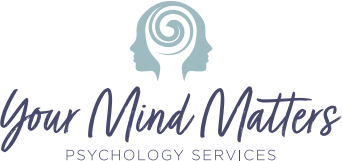Photo by Sydney Sims on Unsplash
Have you felt exhausted, overwhelmed, feeling like you hate what you’re doing, not enjoying your family time and like you’ve got nothing left to give?
You could be suffering symptoms of burnout.
The burnout problem?
Burnout is not a new concept and was explored by American psychologist Herbert Freudenberger in the 1970s. He determined burnout to be essentially a byproduct of our desire for high achievement and the extreme stress levels we put ourselves through to meet this goal. Even prior to the global pandemic, World Health Organization (WHO) recognised burnout as a major occupational hazard with a growing number of worker reports of energy depletion, negativity about their work and a reduction in professional efficacy. The changes to the workplace, family demands (remote learning), reduction in social outlets and work life balance impacts during the pandemic, further compounded this, with significant increases in workplace burnout being reported.
What causes burnout?
Whilst most people are generally equipped to handle stressors that they encounter in life and at work, burnout can start to take hold when these stressors become chronic in nature and are not addressed. Burnout is not a badge of honour, however often tends to be perceived as such, especially in high achieving environments. It is worn daily as we rush to meetings, skip meal breaks to complete an extra task, work long hours, forget to take our vacation time as well as accumulating many years’ worth of personal leave, pushing through exhaustion and illness to attend work due to a misguided belief that we’re irreplaceable. It is also worn by parents who undertake too much and chase the perfect image of parenting to please others, rather than slowing down, asking for help and acknowledging struggles.
When in the throes of full-fledged burnout, one is no longer able to function effectively on a personal or professional level. Since burnout doesn’t happen suddenly, but gradually creeps up, the wellbeing decline is often overlooked until it’s too late. Medically, there has been debate about whether burnout is simply a form of depression, due to similarities and overlap between them. The general consensus is, that the difference is in burnout being specific to workplace/family situations, whereas depression can develop in any given circumstances, even in the absence of triggers and stressors.
What does burnout look like?
Burnout is both emotional and physical exhaustion caused by prolonged periods of stress. WHO describes it as “a syndrome conceptualized as resulting from chronic stress that has not been successfully managed”.
In the workplace, common contributors to burnout include:
- lack of control over things like schedule, workload, and assignments
- unclear job expectations
- dysfunctional workplace dynamics, such as an office bullying or a micromanaging boss
- extremes of activity, such as job monotony or chaos
- lack of social support, and work life balance
The effects of burnout are not limited to the workplace, however. It often spills over to effect relationships with family and friends. Research shows that when supervisors are critical of employees who are also mothers, these women tend to be harsher toward their children as well as more withdrawn. Burnout also tends to increase rates of alcohol and substance abuse. Certain professions, such as health care, are particularly prone to burnout.
The vision of a struggling exhausted parent often paints the clearest picture of what burnout looks and feels like in the family context.
For mothers in a 2018 study, burnout resulted in:
- An underlying current of fear
- Feeling that they were not good enough
- Fear of giving up control over things
- A discontinuity of sense of self.9
Furthermore, burned out mothers:
- Often did not want to be around their children
- Developed an aversion to everyday chores
- Felt like they were working on autopilot
- Had thoughts of harming themselves or abandoning their children
- Experienced strong feelings of distress, self-hate, loneliness, shame, and guilt.
Effects of burnout
As burnout and stress have become more common, the long-term effects can lead to significant problems, which are still continuing to emerge. Our bodies react to heightened stress levels by increasing adrenaline and cortisol, raising your blood pressure, and switching your nervous system into heightened awareness. While this response means to protect you in a dangerous situation, prolonged exposure to this response wreaks havoc on your body.
Physically burnout is linked to heightened blood pressure, hair loss, and chronic pain. Other symptoms can include physical exhaustion, headaches, gastrointestinal symptoms, appetite changes, increased susceptibility to common infections, and sleep disruption. Mentally, burnout is experienced as a feeling of mental exhaustion, cynicism, detachment and ineffectiveness, a lack of accomplishment as well as anxiety and depression.
We cannot simply apply intervention strategies to focus on a single context or only address individual symptoms. We cannot “rest” our way out of burnout, but rather need a combined approach to address all the causes of burnout, both visible and underlying.
You don’t wake up one morning and all of the sudden “have burnout.” Its nature is much more insidious, creeping up on us over time like a slow leak, which makes it much harder to recognize. Still, our bodies and minds do give us warnings, and if you know what to look for, you can recognize it before it’s too late.
The list of these warning signs is not exhaustive and they do exist on a continuum rather than being clearly defined. So, there is generally no clear transition between general stress and burnout and as such regular self-checking as well as listening to feedback from others is necessary.
Signs of physical and emotional exhaustion:
- Early on you may feel a depletion of energy, feeling tired most days. As things progress, you feel physically and emotionally exhausted, drained, and you may feel a sense of dread about what lies ahead on any given day.
- Insomnia. Trouble falling asleep or staying asleep a few times per week can be quite common. Persistent, nightly ordeal of getting to sleep despite severe exhaustion is indicative of the issue progressing
- Forgetfulness/impaired concentration and attention. We all sometimes forget to do things or fail to focus. The problems may get to the point where you can’t get your work done and everything begins to pile up resulting in added stress.
- Physical symptoms. Physical manifestations may include chest pain, heart palpitations, shortness of breath, gastrointestinal pain, dizziness, fainting, and/or headaches. Increases in frequency and severity are generally indicative of condition decline.
- Increased illness. Immune system becomes weakened as the body continues under prolonged stress. This results in increased vulnerability to infections, colds, flu, and other immune-related medical problems.
- Changes in appetite. When we rush there is a tendency to miss meals or not feel hungry or to develop unhealthy eating habits. This can lead to an eventual loss of appetite, weight loss or gastrointestinal issues
- Anxiety. Although it will usually start off with mild onset, symptoms of tension, worry and edginess may become so serious that they interfere with your ability to function productively both in the workplace and in personal life.
- Depression. In the early stages, mildly sad and occasionally hopeless feelings may emerge. They may be followed by feelings of pessimism, apathy, guilt and worthlessness, eventually leading to the feeling of being trapped and severely depressed and believing the world would be better off without you (if you find yourself developing this though patten, please seek immediate assistance).
- Anger. Will usually present as interpersonal tension and irritability, developing into angry outbursts and serious arguments at home and in the workplace at a later stage. (If anger gets to the point where it turns to thoughts or acts of violence toward family or co-workers, seek immediate professional assistance.)
In the industry, burnout is responsible for billions of dollars in losses both through productivity and compensation claims and countless hours in absenteeism and loss of talent.
So what can we do about burnout?
Dealing with burnout can seem like an impossible task, especially when you’re already feeling so drained and exhausted. You can manage stress and burnout! There are many things you can do both by yourself but also with a bit of help. Your first step is to ACKNOWLEDGE it exists. Sometimes we get very stuck in our routines and we don’t see the effects these have on us. It sets a standard for our normality, and hence becomes less noticeable and more entrenched. So, it’s vital to become aware of its existence.
Here’s a few ideas to help yourself start to feel on track again:
- Simple things such as talking to those who you feel closest to and admitting how you feel can help lift the weight off. If you are concerned about sharing with those in your social circle, speaking to someone impartial like a GP, psychologist or a mental health worker can really help.
- Setting boundaries, especially within the work context or where you feel the most stress is coming from. Become accustomed to saying “no” in any context, be it work or social engagements. It is okay to take a time out for yourself or even to take a day off when needed. Especially when working from a home environment, setting boundaries and knowing when to stop work and shut off for the day is important. Make sure you have space in your house where you can escape work and have time to unwind and relax.
- Take technology breaks! Put away the laptop and phone, ignore the news and social media for a while. Schedule these times if you need to.
- Bury your head in a good book, listen to a podcast, do a puzzle.
- Nourish your creative side and start a new fun project or perhaps explore what is something you’ve always wanted to do but never got to.
- Get those endorphins flowing by doing some exercise! Even a bit of time outside can be of great help.
- Set aside time just for relaxation. Look up a mediation, take a yoga class, take a walk outside or do some mindful colouring! Try to take at least 15 minutes a day for a mindful activity and give your brain and body time to unwind.
- Sleep restores and heals your body, helps you function at your best, and is a necessary part of reducing stress. Most adults who get less than eight hours of sleep experience higher stress levels. Some ways you can improve your sleep are:
- Meditate before bed
- Reduce screen time before sleeping
- Try a relaxing bath
- Read a book
- Ensure you have enough daylight exposure
- A longer-term intervention will require exploring changes that can be implemented within your current workplace and routine or considering other vocational options if this is not possible.
- Within the family sphere, seeking help, collaboratively exploring different ways of doing things and ensuring time is set aside for yourself no matter how busy things get.
If you would like some support with better managing work stresses, why not give us a call today? Our team of highly skilled and well-experienced practitioners are here to help.
References
Fuller, T. The Physical Effects of Stress and Burnout & What To Do About It. February 23, 2021. https://journify.co/blog/2021/2/23/the-physical-effects-of-stress-and-burnout-amp-what-to-do-about-it
Ginger. 2019 workforce attitudes toward behavioral health. Ginger Anuual Report. 2020. Accessed July 30, 2021. https://go.ginger.io/final-report-workforce-behavioral-health-2019
Hubert S, Aujoulat I. Parental burnout: when exhausted mothers open up. Front Psychol. 2018;9:1021
Psychology Today. The Tell Tale Signs of Burnout … Do You Have Them?. November 26, 2013. https://www.psychologytoday.com/au/blog/high-octane-women/201311/the-tell-tale-signs-burnout-do-you-have-them
Queen D, Harding K. Societal pandemic burnout: a COVID legacy. Int Wound J. 2020;17(4):873-874.
Threlkeld K. Employee burnout report: COVID-19’s impact and 3 strategies to curb it. Indeed. March 11, 2021. Accessed July 30, 2021. https://www.indeed.com/lead/preventing-employee-burnout-report
World Health Organization. Burn-out an “occupational phenomenon”: International Classification of Diseases. May 28, 2019. Accessed July 30, 2021. https://www.who.int/news/item/28-05-2019-burn-out-an-occupational-phenomenon-international-classification-of-diseases
Our Blog Author

This blog was written by Lana Lubomirska – Psychologist at YMM.
Lana has experience working with children, adolescents and adults from different cultural and socioeconomic backgrounds. She is committed to providing a client-centred safe environment for every individual and assisting clients along their journey. Lana uses a variety of evidence-based therapies to support clients in addressing difficulties with anxiety, depression, relationship issues, friendship problems and educational stresses.
To learn more about Lana, check out the “Our Team” page on our website! https://yourmindmatters.net.au/our-team/

